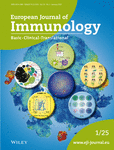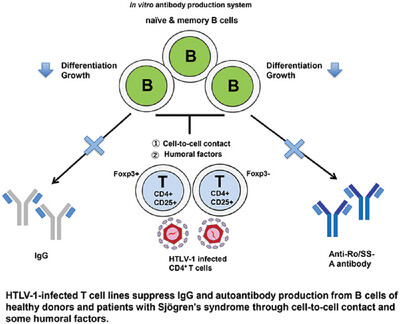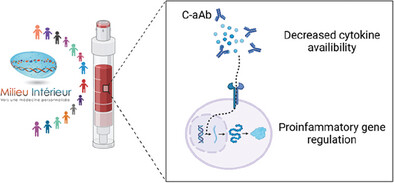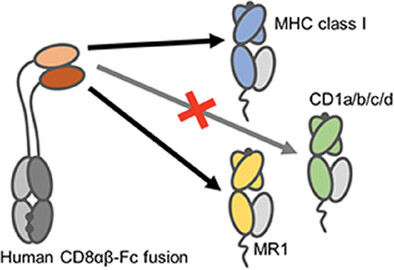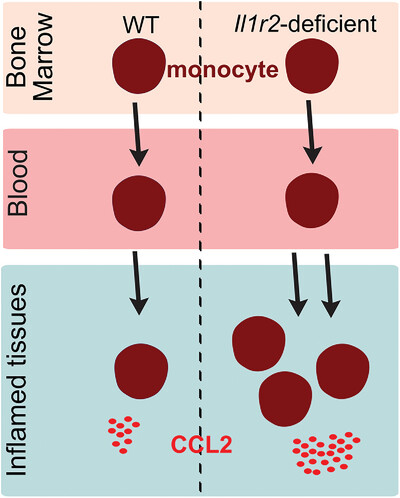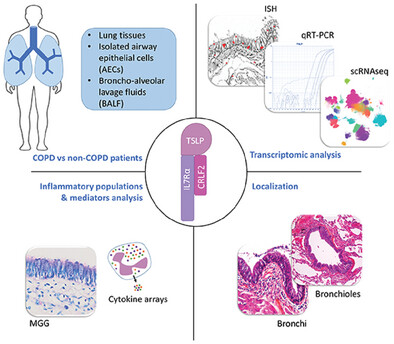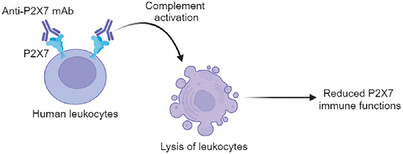Journal list menu
Export Citations
Download PDFs
Cover Picture
Cover Story: Eur. J. Immunol. 1'25
- First Published: 08 January 2025
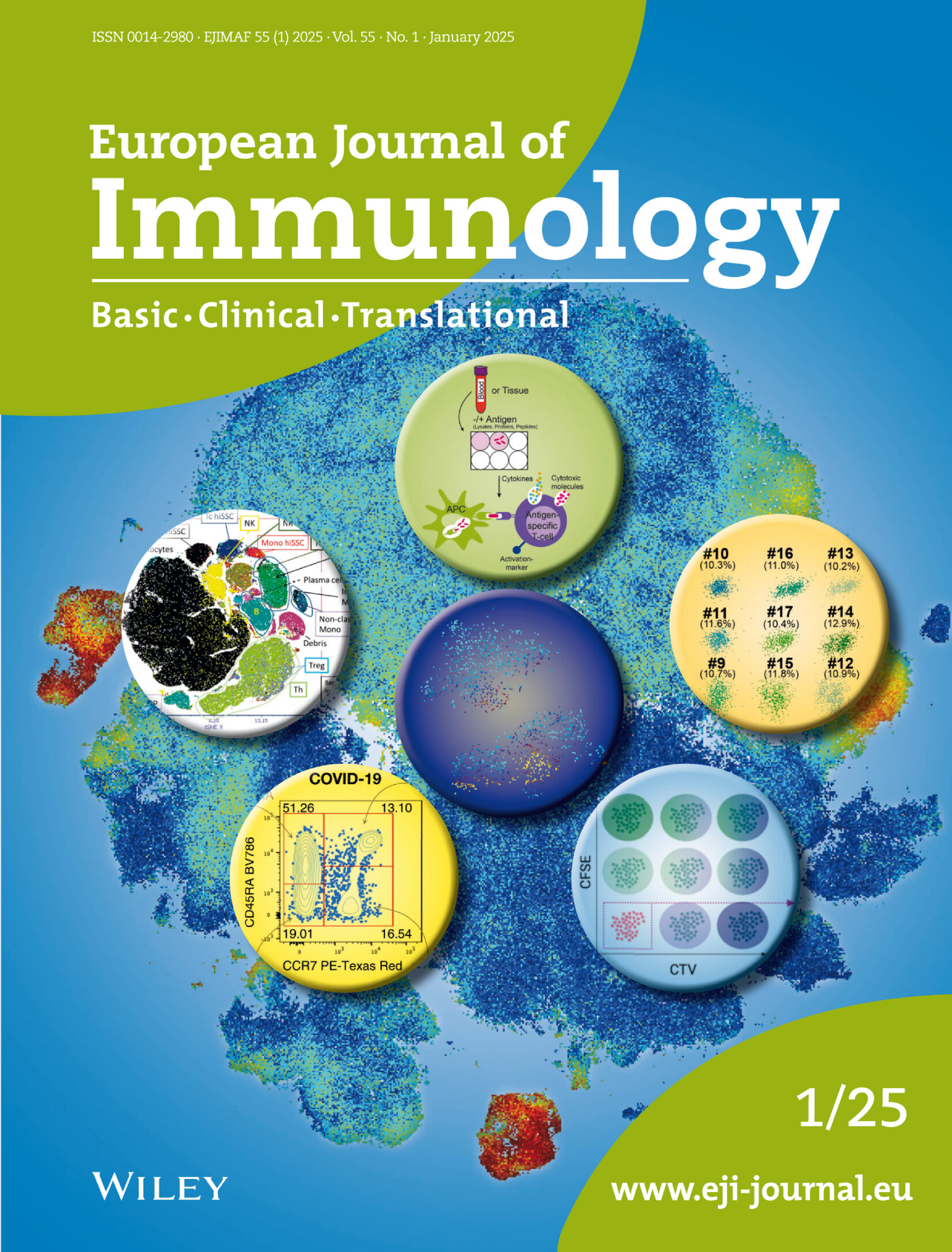
Our cover features images related to flow cytometry techniques widely used for analysis of function and phenotypes of major human and murine immune cell subsets, superimposed on a multidimensional immune cell population scatter plot. These images are taken from the third edition of EJI's Flow Cytometry Guidelines by Cossarizza et al., a comprehensive resource prepared by flow cytometry and immunology research experts from around the world.
Issue Information
Immunodeficiencies and Autoimmunity
Research Article
Clinical
Direct Inhibitory Effect of HTLV-1-Infected T Cells on the Production of Anti-Ro/SS-A Antibody by B Cells from Patients with Sjögren's Syndrome
- First Published: 08 January 2025
Molecular Immunology and Signaling
Rapid Research Article
Basic
Survival of Human Bone Marrow Plasma Cells In Vitro Depends on the Support of the Stromal Cells, PI3K, and Canonical NF-kappaB Signaling
- First Published: 08 January 2025
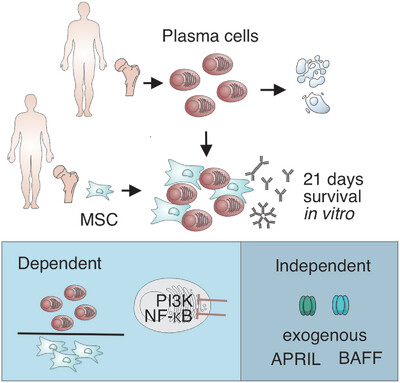
This study established a 21-day in vitro culture system for human long-lived plasma cells (LLPCs), demonstrating their survival and antibody secretion depend on stromal cell contact. PI3K and NF-kappaB pathways were crucial for LLPC survival, aligning with findings in mice. This model advances the understanding of human LLPC biology.
Highlights
Review
Basic
Metabolic Reprogramming of Fibroblastic Reticular Cells in Immunity and Tolerance
- First Published: 18 November 2024
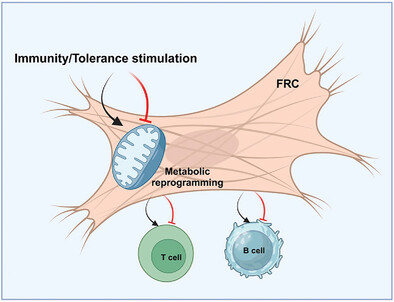
This review addresses how fibroblastic reticular cells (FRCs) undergo metabolic reprogramming in response to infections, autoimmune diseases, and cancer, adjusting their glycolysis, oxidative phosphorylation, and fatty acid metabolism to modulate immune functions. These metabolic shifts in FRCs highlight potential therapeutic strategies to improve immune regulation across various disease contexts.
Adaptive Immunity
Research Article
Basic
B Cells With Complementary B Cell Receptors Can Kill Each Other
- First Published: 09 November 2024
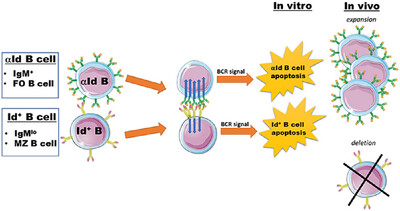
Depending on whether the interactions occur in vitro or in vivo, physical binding between two B cells with complementary BCRs leads to distinct outcomes for the participating cells. In vitro, both the Id+ B cell and the complementary anti-idiotypic B cell undergo apoptosis. In vivo, follicular αId B cells expand, whereas marginal zone Id+ B cells become deleted.
Highlights
Guidelines
Clinical
Guidelines for preparation and flow cytometry analysis of human nonlymphoid tissue DC
- First Published: 12 December 2024
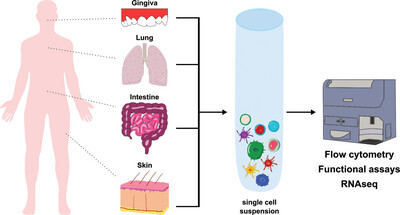
We here provide detailed protocols for isolating single cell suspension from human nonlymphoid tissues, such as gingiva, lung, intestine, skin, and different tumor tissues as well as tumor-draining lymph nodes. Further, we provide gating strategies for flow cytometric analysis of human DC subpopulations in diverse nonlymphoid tissues.
Editorial
Decoding complement: Novel disease insights and therapeutic horizons
- First Published: 25 October 2024
NEWS
Innate Immunity
Research Article
Basic
Alveolar epithelial cells shape lipopolysaccharide-induced inflammatory responses and reprogramming of alveolar macrophages
- First Published: 05 November 2024
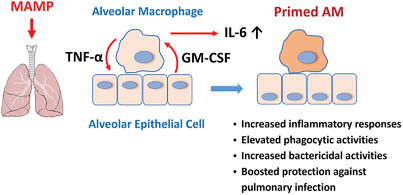
After exposure to LPS, Alveolar macrophages (AMs) secrete TNF-α to induce GM-CSF production by alveolar epithelial cells (AECs). GM-CSF promotes AMs to secrete IL-6 and primes AMs for subsequent challenges. These results show that in response to MAMP stimulation, AMs and AECs respond collaboratively and AMs are primed.
Allergy and Inflammation
Research Article
Basic
The VEGF-Mediated Cytoprotective Ability of MIF-Licensed Mesenchymal Stromal Cells in House Dust Mite-Induced Epithelial Damage
- First Published: 06 November 2024
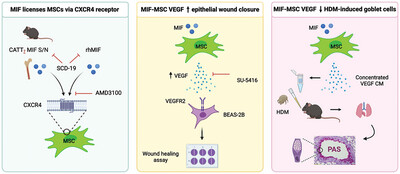
Licensing of MSCs with MIF requires CXCR4 receptor binding. Enhanced VEGF production by MIF-licensed MSCs promotes wound healing in vitro and can be blocked using the VEGFR2 inhibitor SU-5416. MIF-licensed MSC conditioned medium significantly reduced goblet cell hyperplasia in house dust mite-driven allergic airway inflammation in vivo.
Immunity to Infection
Research Article
Basic
Memory Phenotype Tfh Cells Develop Without Overt Infection and Support Germinal Center Formation and B Cell Responses to Viral Infection
- First Published: 20 November 2024
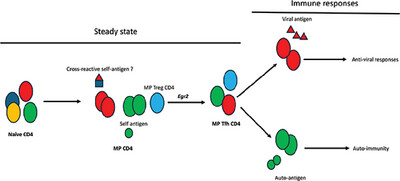
In the steady state, naïve CD4 T cells can develop into memory phenotype (MP) cells. We discovered that MP T cells include a subpopulation of Tfh cells. MP Tfh cells share key markers with pathogen-induced memory Tfh cells and can support germinal center formation and antibody responses to infection.
Immunodeficiencies and Autoimmunity
Research Article
Clinical
Neutrophil Extracellular Traps Participate in the Pathogenesis of Lupus Through S100A10-Mediated Regulatory T-Cell Differentiation and Functional Abnormalities
- First Published: 07 November 2024
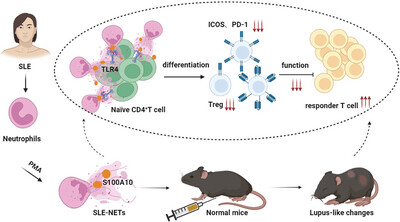
Neutrophil extracellular traps (NETs) contribute to SLE development, yet their interaction with Regulatory T cells (Tregs) remains obscure. This study reveals that selectively enhanced NETs in mice suppress Treg production and function. Through modulating naive CD4+ T cells via TLR4, NETs inhibit Treg differentiation, bridging innate and adaptive immune responses.
Tumor Immunology
Research Article
Clinical
Type I Interferon Drives a Cellular State Inert to TCR-Stimulation and Could Impede Effective T-Cell Differentiation in Cancer
- First Published: 12 November 2024
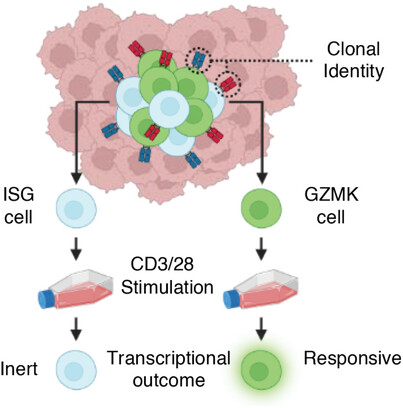
Multimodal single-cell RNA sequencing identified a population of CD8+ T cells elevated in tumor tissue enriched for interferon-stimulated genes (ISG). These ISG cells are clonally related to a population of Granzyme K (GZMK)-expressing CD8+ T cells. However, unlike GZMK-expressing T cells, ISG cells were transcriptionally inert in response to in vitro stimulation. Created in BioRender.com
Tissue Immunology and Leukocyte Trafficking
Research Article
Basic
Neural Crest-Derived Mesenchymal Cells Support Thymic Reconstitution After Lethal Irradiation
- First Published: 16 November 2024
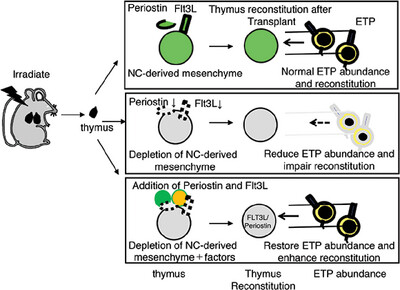
Thymic NC-derived mesenchymal cells produce factors, including Flt3L and Periostin, after irradiation. Depletion of NC-derived mesenchyme reduces these factors, decreases the abundance of ETPs, and impairs thymic reconstitution postirradiation. The addition of Flt3L and Periostin after NC-derived mesenchyme depletion restores reconstitution, highlighting the importance of NC-derived mesenchyme in thymus regeneration.
NOTES AND INSIGHTS
Characterization of the Molecular Signature of Human Monocytes in Aging and Myelodysplastic Neoplasms
- First Published: 08 November 2024
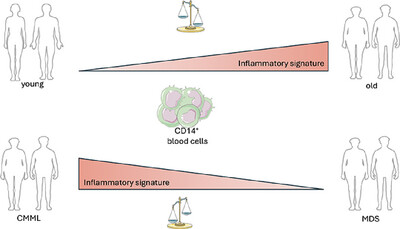
• Aging leads to chronic inflammation and immune dysfunction, heightening the risk of myeloid malignancies like MDS and CMML.
• Both aging and MDS show alterations in monocyte subtypes and function. Aging boosts inflammatory genes upregulation, whereas MDS favors antigen presentation, reflecting distinct immune and disease-specific adaptations.
• MDS shows reduced inflammatory activity in CD14+ cells, whereas CMML exhibits heightened inflammation, highlighting distinct disease mechanisms.
Immunodeficiencies and Autoimmunity
Research Article
Basic
The Microbiome Modifies Manifestations of Hemophagocytic Lymphohistiocytosis in Perforin-Deficient Mice
- First Published: 16 November 2024
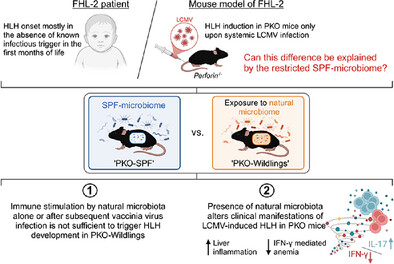
This study investigates the microbiome as a potential factor underlying the apparent differences in immune stimulation required for HLH induction in perforin-deficient mice compared to FHL-2 patients. Using PKO-Wildlings, we show that while immune activation by natural microbiota is not sufficient to induce HLH, it can influence manifestations of LCMV-induced disease.
Clinical
Cytokine Autoantibodies Alter Gene Expression Profiles of Healthy Donors
- First Published: 17 November 2024
NEWS
Crafting an MSCA PhD Masterpiece: Guiding Students on the Verge of Discovery
- First Published: 26 November 2024
Immunity to Infection
Research Article
Basic
Distinct Requirements for CD4+ T Cell Help for Immune Responses Induced by mRNA and Adenovirus-Vector SARS-CoV-2 Vaccines
- First Published: 27 November 2024
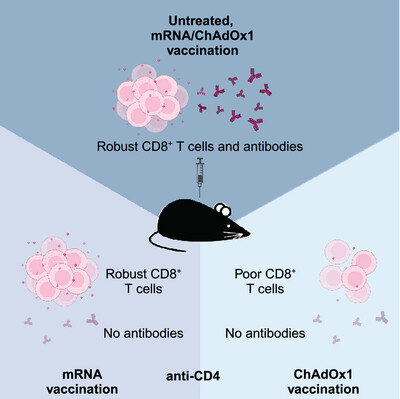
The role of CD4+ T cells in promoting cellular and humoral immunity induced by novel mRNA–LNP and adenovirus vector vaccine technologies is incompletely understood. Surprisingly, we identified a discordant need for CD4+ T cell help based on both vaccine platform and arm of adaptive immunity examined. These data provide further evidence of the unique biology underpinning these new technologies.
Adaptive Immunity
Short Communication
Basic
Characterization of Human CD8αβ Interaction With Classical and Unconventional MHC Molecules
- First Published: 20 December 2024
Research Article
Basic
Probing TCR Specificity Using Artificial In Vivo Diversification of CDR3 Regions
- First Published: 02 December 2024
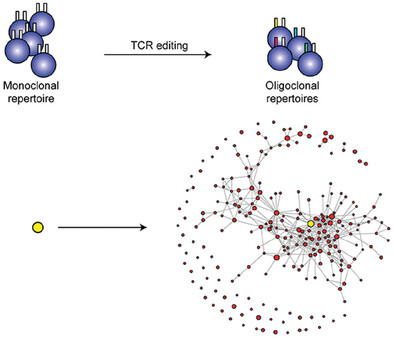
Diversification of transgenic TCRs by CRISPR/Cas9-mediated mutagenesis of Tcra and Tcrb chain genes in vivo converts monoclonal repertoires of known specificity into an oligoclonal pool of TCRs of altered antigen reactivities. This generally applicable approach helps to identify crucial amino acid residues in the CDR3 regions required for antigen recognition.
Allergy and Inflammation
Short Communication
Basic
IL1R2 Acts as a Negative Regulator of Monocyte Recruitment During Inflammation
- First Published: 28 November 2024
Highlights
Review
Basic
Function and Spatial Organization of Tumor-Invasive Human γδ T Cells—What Do We Know?
- First Published: 02 December 2024
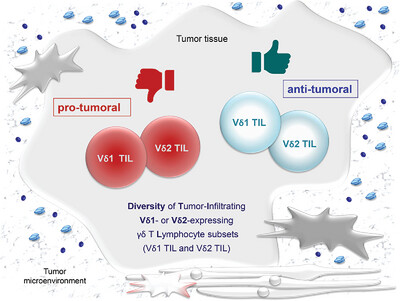
This review provides deeper insights into the localization of intra-tumoral γδ T lymphocytes in solid tumors. Additionally, a pro- or anti-tumoral influence of the tumor microenvironment and expression of checkpoint inhibitory molecules on γδ T cell functionality is described. To overcome the suppression of tumor-infiltrating γδ T cells, future immunotherapy approaches are summarized.
Allergy and Inflammation
Short Communication
Clinical
TSLP and TSLPr Expression and Localization in the Airways of COPD and Non-COPD Patients
- First Published: 16 January 2025
Immunity to Infection
Research Article
Clinical
Similar Spatial Expression of Immune-Related Proteins in SARS-CoV-2 Placentitis and Chronic Histiocytic Intervillositis
- First Published: 16 January 2025
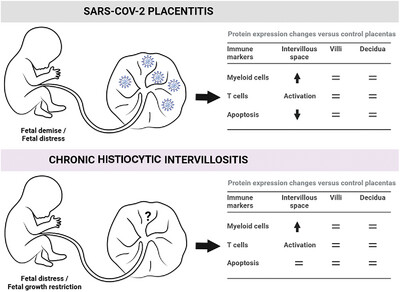
SARS-CoV-2 placentitis and chronic histiocytic intervillositis are associated with massive infiltration of myeloid cells and T cell activation limited to the placental intervillous space, and not in villi or decidual areas. The prominently reduced expression of apoptosis-related proteins in SARS-CoV-2 placentitis could be related to more acute and severe outcomes.
Immunodeficiencies and Autoimmunity
Short Communication
Clinical
Increased Phosphorylation of Intracellular Signaling Molecules Indicates Continuous Activation of Human Autoreactive B-Cells
- First Published: 16 January 2025
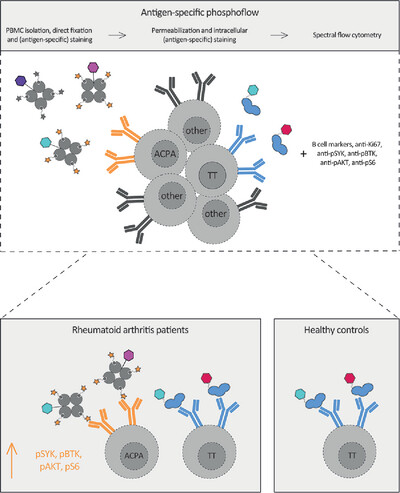
Directly ex-vivo and after fixation, autoreactive B cells were detected using fluorescent streptavidin molecules conjugated to citrullinated or arginine peptides. Anti-tetanus toxoid B cells served as controls and were detected using fluorescently labeled tetanus toxin. Antigen-specific phosphoflow revealed increased levels of pSYK, pBTK, pAKT, and pS6 in autoreactive B cells.
Immunomodulation and Immune Therapies
Research Article
Basic
The Anti-Human P2X7 Monoclonal Antibody (Clone L4) Can Mediate Complement-Dependent Cytotoxicity of Human Leukocytes
- First Published: 24 January 2025
EDITORIAL
Striking the Right Chord at EJI: Introducing Editor-in-Chief Matteo Iannacone and the Seamless Transfer Policy
- First Published: 30 January 2025




